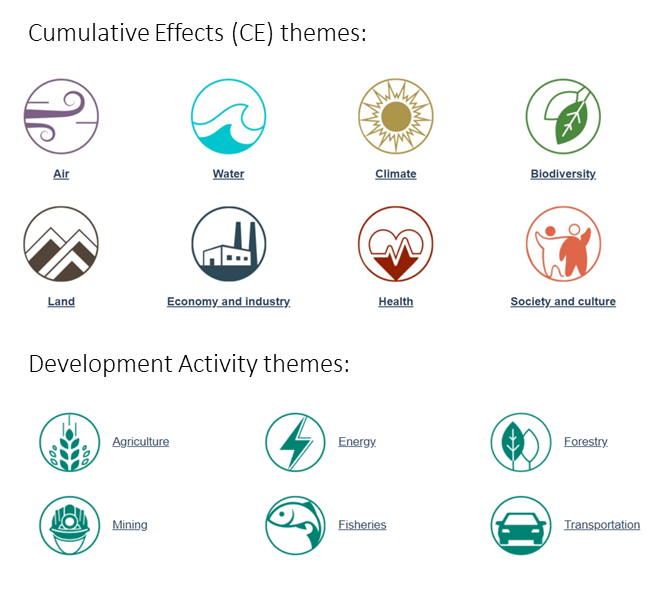Graduate Students Explore the Open Science and Data Platform
The Open Science and Data Platform (OSDP) has a wide range of functions useful to a diverse range of users, including non-governmental organizations (NGOs), citizen groups, impact assessment practitioners, and local and regional decision-makers. These diverse user groups all have one thing in common: a desire to use science, data and information about cumulative effects to support better decision-making about development activities, now and in the future.
The OSDP team engages and consults with new and existing users to gather valuable feedback that can help improve the OSDP. As well, discussions are ongoing with key user groups like Indigenous organizations working on cumulative effects, impact assessment practitioners and natural resource sector associations. In parallel, the OSDP team is working to connect with additional data holders to provide access to the best available information relevant to cumulative effects and development activities in Canada.
In November 2021, graduate students at Dalhousie University’s School of Resource and Environmental Studies took part in an in-person demo session featuring the Government of Canada’s new platform. Students learned how the OSDP supports the discovery of cumulative effects-related content, including geospatial data, scientific publications, and information about development and regulatory activities across Canada including from federal, provincial, and territorial websites and repositories. Through an interactive activity, they also reviewed the platform’s key features like the keyword search, the filter options, the advanced search function and the map viewer, and then provided feedback from a user experience perspective.
The demonstration pointed to OSDP resources that could be relevant to a local environmental assessment (EA) project in Nova Scotia, the Boat Harbour Remediation Project. The ongoing EA pertains to the proposed remediation of hazardous waste-bearing sediment from Boat Harbour and nearby lands resulting from the decades-long operation of an effluent treatment facility. The group explored relevant mappable datasets, such as:
- Critical Habitat- Species at Risk,
- Atlantic Shoreline Classification,
- First Nations Locations,
- Historic Treaties, and the
- Impact Assessment Agency of Canada Registry.

Key Themes & Features
- Publically released on March 9, 2021
- More than 4,500+ datasets (from federal and provincial governments), 124,000+ scientific publications, 11,000+ entries related to development activities (from refulatory registries), 98 content collections
- Scope of information to increase over time
- Interactive geospatial mapping capabilities
- Educational content: cumulative effects, categorized by key CE and development activities themes
- Links to content providers and supplemental information
Students’ suggestions are informing improvements to the OSDP.
- Students appreciated that the demonstration was designed to focus on their field of study and local areas of interest, as well as the amount of search results accessible through the platform.
- Many of the students mentioned they would likely refer back to the OSDP throughout their graduate studies.
- Students were particularly interested in the geospatial nature of datasets and the ability to interact with the data within the map viewer. They also made suggestions regarding features that could be improved or added to enhance the map viewer.
“The OSDP aims to be a critical source of data for people from all sectors of society to understand, and participate in, natural resource development project planning. It was eye-opening for our class to understand the scale and density of development but also be able to cross-reference these against values that were important to individuals.” – Dr. Alana Westwood, Assistant Professor, School for Resource and Environmental Studies, Dalhousie University.
If you are interested in providing your feedback on the OSDP, a user feedback survey is accessible through the home page via the “Tell us what you think” button. We would love to hear from you!